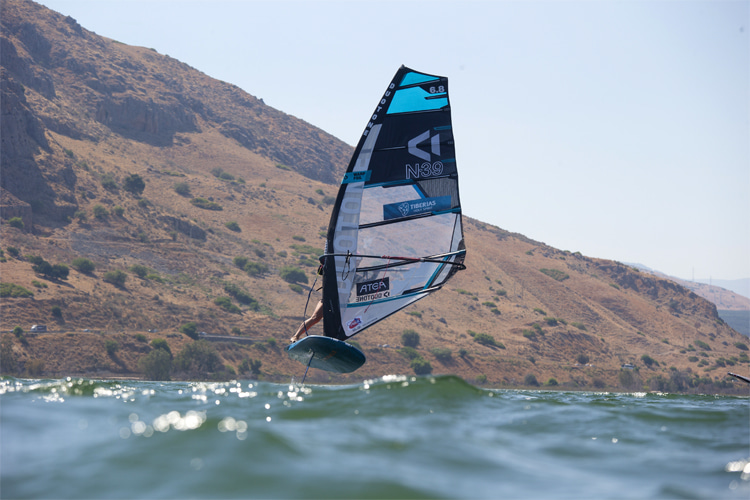Sailing is an ancient skill and art. It involves a complex balance between wind, boat, sail, and several laws of physics and motion.
"Downwind Faster than the Wind: Sailing Explained by Newtonian Physics and Galilean Relativity" is an exciting - and controversial - book by Nicholas Landell-Mills that promises to shake up the scientific community.
The author is not your average academic or physicist.
Nicholas Landell-Mills is a former private pilot who flew a home-built plane and someone who enjoys looking deep into the why and how of things from a scientific perspective.
He used to work in finance but re-started a career as a self-taught physicist, mostly analyzing lift and flight.
Landell-Mills also surfed in Polzeath and west Wales, and that's one of the reasons he wrote an in-depth paper on surfing and nose riding explained by Newtonian physics.
The British living in Chamonix, France, also put out an extraordinary analysis of the physics involved in kiteboarding.

A Revolutionary Approach
But the book "Downwind Faster than the Wind" breaks up with the standard established paradigms.
"My analysis refutes several assumptions by showing that fluid mechanics fails to explain the forces on a sail - a sail is not a wing, and the main force created is not perpendicular to the sail."
"Past research failed to explain sailing downwind faster than the wind because they relied on these false assumptions," stresses Landell-Mills.
The book features five chapters.
In the first chapter, Nicholas Landell-Mills analyses the basics of sailing and makes an airflow analysis.
Then, the author dives into Newtonian mechanics and how it applies to sailboats with calculations and examples.
In chapter three, Landell-Mills adds Galilean relativity theory into the mix and explains the science behind the famous Blackbird wind-powered vehicle.
In the fourth chapter, probably the most controversial one, the author points out the false sailing theories and explains why a sail is not a wing.
In the fifth and final chapter, Landell-Mills dissects the hydrofoils, makes his conclusions, and challenges readers to an open discussion.
Unresolved Physics
The author has done research into how boats sail into winds, how birds and insects fly, terminal velocity skydiving, how fish swim, all based on Newtonian physics.
Therefore, his book should be an interesting read, even for the most skeptical scientist or academic.
"The Newtonian approach is significant as it provides new and useful insights," notes the British science enthusiast.
"It challenges the prevailing sailing solutions based on fluid mechanics and resolves long-running nautical conundrums, including how a boat can sail downwind faster than the wind."
"The physics behind how boats sail into the wind is unresolved."
"No experiment on a sailboat in realistic conditions has proven any theory or equation to be true. Problematically, many people mistake mathematical proof (e.g., Navier-Stokes equations) and computer simulations (e.g., CFD) for scientific proof."
Nicholas Landell-Mills believes that failure to explain sailing adequately is puzzling given how long people have been sailing and how important sail-powered boats were to early global economic development.
"A number of different theories have been proposed. The prevailing theories rely on fluid mechanics, not Newtonian mechanics," underlines the author.
Nicholas Landell-Mills has no plans to stop.
One of his goals is to publish a book resolving the enigma of how airplanes fly, using Newtonian physics.
"It's a tough sell as aeronautical engineers are taught that fluid mechanics explain lift," concludes Landell-Mills.
"Downwind Faster than the Wind" is available on amazon.co.uk.
